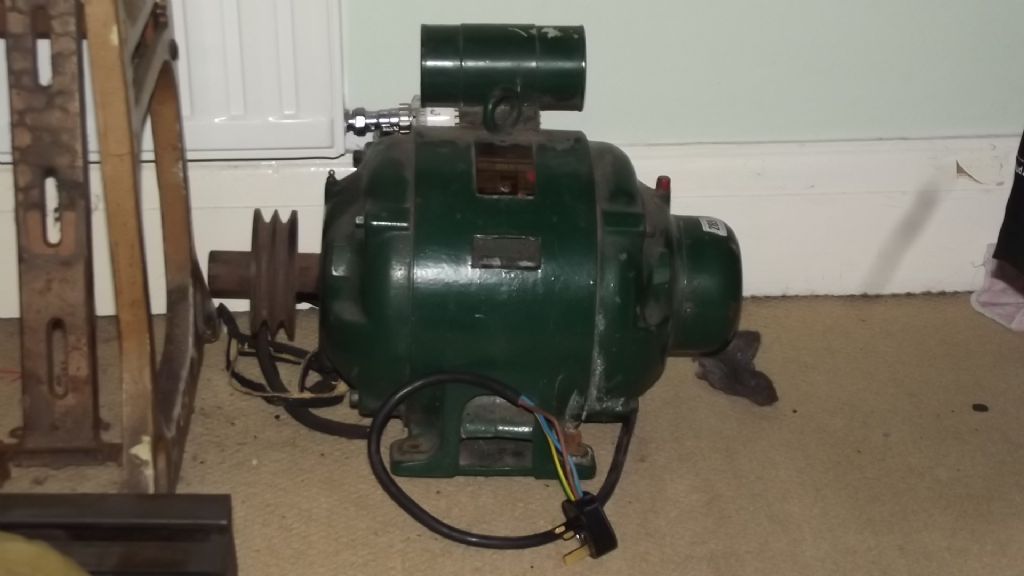Hi Steve, as usual the answer is, it depends! This is going to be complex! If you are putting a motor into a position where it will be in service for a long time. It would be best to strip it, wash out and repack the bearings. Here I will be controversial, and tell you to pack the bearing full of grease on both sides, and refit it. Others will insist that it is incorrect, and will say that it should only be one third full, or half full, one side only etc etc. Tell me then how a bearing stays one third full when it is fed by a grease nipple? Many will quote what they have read in bearing manuals, and that I also take with a huge pinch of salt. The bearings we buy today are not sealed, they are shielded, and dust can still get into them, you can also pop the shields off with a jewelers screwdriver, and if you do, you will be horrified how little grease is in them, they are, in fact "sealed for (a short) life". as I have said above, I have washed out and repacked thirty odd year old bearings and refitted them to many many motors because they were still in good condition. So, if the shields do not seal the bearing, why are they there? The only conclusion I can come to is to prevent any more grease being added and thus shorten the life of the bearing, and increase sales. I have changed hundreds of car wheel bearings, but the cause of failure is always that the external seals have broken down and allowed water and dirt into the bearing. If a bearing is kept clean, supplied with sufficient clean lubricant, and not overheated it should last indefinitely, but modern bearings do not. From this I can only assume that they are made from inferior materials, which I doubt, or that they are incorrectly lubricated, which can occasionally mean too much but mostly by far, too little.
When you rebuild a motor of the Brook Type with grease nipples, you will see that the grease nipple is at the top of the motor, and underneath the motor, somewhere on the lower portion of the end shell is a grease relief plug. To lubricate correctly, you remove the grease relief plug, (which is what our miller did not do!) check the relief hole is clear with a piece of wire, then put a grease gun on the nipple, and add grease to the bearing until it (just) starts to come out of the relief hole, then stop and refit the plug in the relief hole. The bearing is now completely full of grease (which gives the lie to those who say this should never happen!) If a motor is in use 8 hours per day this process was normally carried out weekly, with the motor stopped! If you grease a motor while it is running the grease will tend to ooze into the motor as there is usually no seal to stop this. By doing this you are effectively changing the lubricant constantly and flushing out any debris in the bearing.
Different motors used different methods, some had grease cups which were filled and given a certain number of turns for a set period of time, (1/2 turn per day, refill weekly) usually all the information needed being marked on the motor plate.
In today's modern world of course, we have advanced so far that we no longer need old fashioned things from yesteryear like grease nipples, so today's motors last till the tiny amount of grease polymerises or gets some dust in it, and then the extra load overheats the motor, the grease turns to tar and the motor burns out, and we throw it away and replace it, which is exactly what the manufacturers intended.
As you have spotted Steve, the grease has nowhere to go unless there is a relief plug, so it will force its way past the unsealed shaft and into the motor, and you will also see some exit at the shaft end around the shaft, as soon as you see this STOP PUMPING! If grease has been allowed to escape inside a motor which is not totally enclosed then it will pick up dust and some of that dusty grease will be dragged back into the bearing by the rotation of the shaft, and dust laden grease is like grinding paste. Incidentally, later motors sometimes had an unplugged relief hole, and the same rules apply. It is also sometimes possible to look through vents into the motor to check that grease is not coming out round the shaft. On your Myford, or similar, if there is sufficient grease in the bearing, and assuming you use it fairly often, a couple of pumps four times a year is sufficient. You have started from the right place, because you were in doubt, so you stripped, cleaned and repacked the bearings, now you only need to grease occasionally. I hope I haven't bored you to death!
Phil
Phil Whitley.





